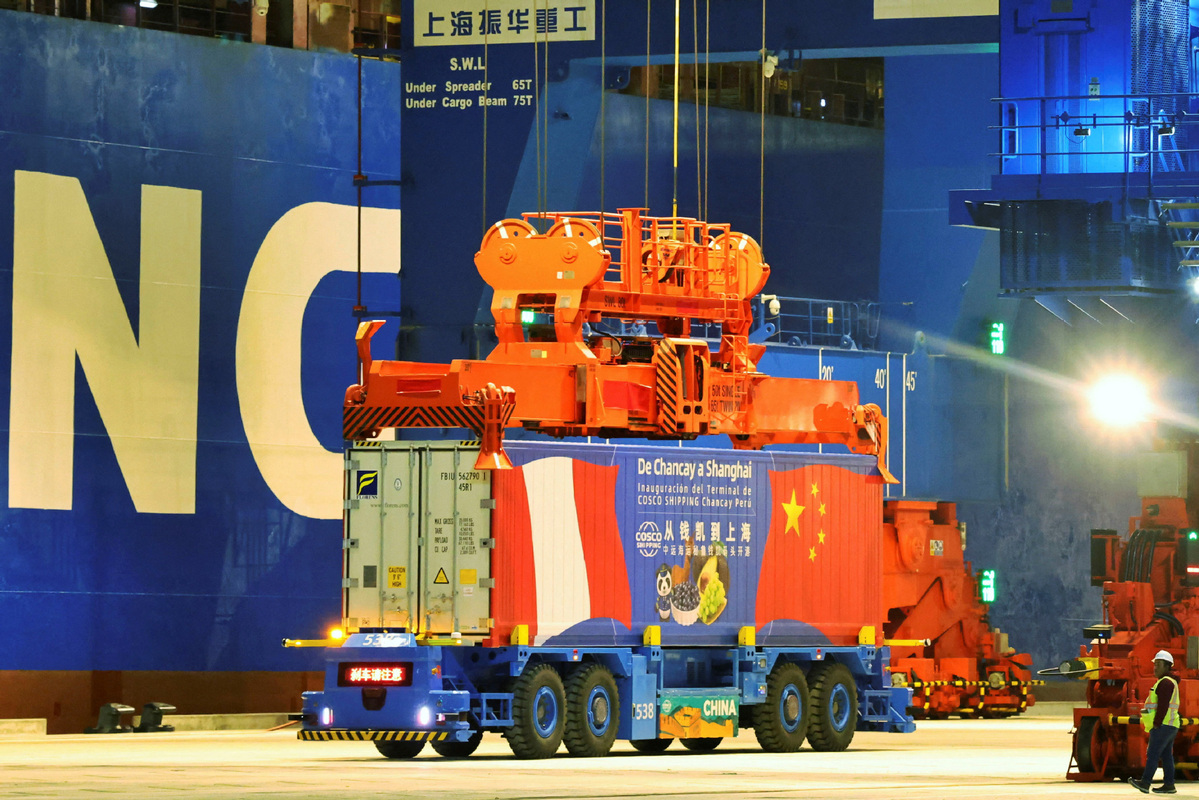Peru's Chancay Port raises hopes of prosperity

To many Peruvians, a new mega-port near their capital means more jobs, businesses and a closer link between Latin America and Asia — or even a dream come true.
"The Chancay Port is important to us," Rafael Quinones, the operations manager of a hotel located in Lima, Peru, told China Daily on Friday.
The day before, the Chancay Port held its inauguration ceremony, themed "From Chancay to Shanghai", as it launched the port's trial operations.
Developed by China's COSCO Shipping Group, the $1.3 billion deep-water port will accommodate the largest container ships. It will cut the sea journey to China from 33 days to 23, and reduce logistics costs by at least 20 percent, which is expected to significantly boost Peruvian exports and strengthen trade between Latin America and Asia.
Quinones works in Lima, which is 50 miles, or 78 kilometers, from Chancay. But he said he has felt the "impact of Chancay" already.
"The construction of Chancay Port has brought a lot of people coming and going, while there is currently very little infrastructure in the Chancay area. Therefore, people who go to Chancay come to Lima first; they stay in hotels, eat and spend money," he said. "Lima's tourism is not really developed. Chancay has benefited the economy of Lima and Peru as a whole even before its opening of the port."
"It's going to be the biggest project not only in Peru but also in South America," said Narda Obregon, who works for a Peruvian travel company. She told China Daily that northern Peru, where the Chancay Port is, produces much cotton and textiles, and agricultural products such as avocado and paprika from the countryside also are on Peruvian exporters' business cards.
"We are going to export all our products to China," Obregon said. "And the friendship between Chinese and Peruvians is about more than just business."
Miguel Seminario, the general coordinator of the Presidential Secretariat for Social Communication, said that China could share experiences, for example, in Shenzhen, with Peru through projects such as Chancay.
"I am sure that you are going to help us a lot because you have achieved a lot in the last 15 years. You have grown a lot, not only from the economic point of view but also socially within China," he said. "You have helped us a lot."
Seminario also told China Daily that his graduate student nephew was working on a paper about the social impact of the Chancay Port. Some of his friends who have property in the Chancay area are considering finding investors to build hotels and restaurants.
Estefania Rios, an exhibition organizer for YouTube in Lima, said she was excited about the completion of the port. She said that the project is important for improving the area's economy and that she hopes the government will take advantage of the opportunities the port creates.
"With the opening of the channel, more business opportunities will come to Peru, and my trade show business will also benefit from it," she said.
Yesenia Chaves, who was working at an exhibition in the international media center during the weeklong APEC Leaders' Meeting, can speak fluent Chinese. She told China Daily that the Chancay project would bring more Chinese companies and provide career opportunities.
"It is a great opportunity for us Peruvians and China to improve our international and economic relationships. I think it can also be a better opportunity for people who are interested in Chinese culture and the Chinese language."
Quinones said that the port can help Peru play a more important role in Latin America and the world.
"It will be the best port in this region," he said. "It is one of the major dreams of Peruvians for many years. The cooperation between Chinese and Peruvian companies has made this dream come true, with Chinese investment and Peruvian hard work."
